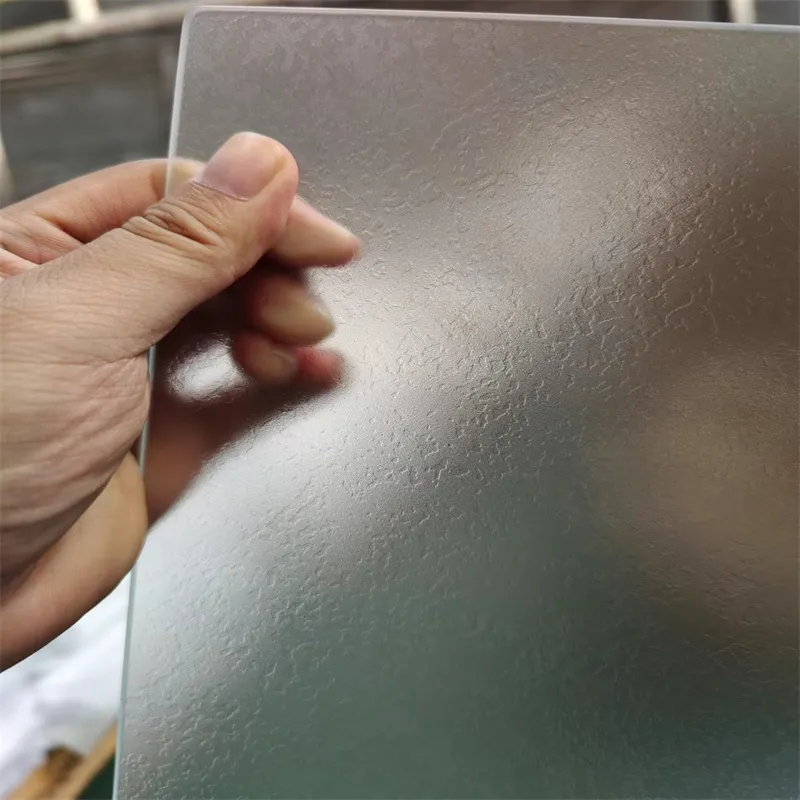Dec . 14, 2024 04:58 Back to list
float glass manufacturing process
The Float Glass Manufacturing Process
The float glass manufacturing process is a highly specialized method used to produce high-quality flat glass for various applications, including windows, doors, mirrors, and screens. This innovative technique was pioneered by Sir Alastair Pilkington in the 1950s and has since revolutionized the glass industry. The process is renowned for its ability to create sheets of glass that are uniform in thickness, clear, and free from distortion. This article delves into the intricate steps involved in the float glass manufacturing process, highlighting its significance and impact on the market.
Raw Material Preparation
The float glass production begins with the preparation of raw materials. The primary components used include silica sand, soda ash, and limestone. Additional materials, such as alumina, magnesium oxide, and various coloring agents, may also be added to achieve specific properties or aesthetics. Each raw material plays a crucial role; for example, silica sand provides the necessary silicon dioxide, which is the primary constituent of glass, while soda ash acts as a flux that lowers the melting temperature.
Once gathered, the raw materials are precisely weighed and mixed to create a homogeneous batch, which is then transported to the furnace.
Melting
The mixed batch is then placed into a furnace, which is heated to temperatures exceeding 1,600 degrees Celsius (2,912 degrees Fahrenheit). At this stage, the raw materials undergo a transformation as they melt and fuse into a liquid glass. The melting process requires careful control to ensure that the glass is free from impurities and bubbles, resulting in a high-quality product. The molten glass is typically colored according to specifications by adding various metal oxides during this stage.
Floating on Tin
After melting, the molten glass is gently poured onto a surface of molten tin, a crucial step in the float glass manufacturing process. This floating process takes advantage of the lower density of glass compared to tin, causing the glass to spread out evenly, forming a smooth sheet. Under the influence of gravity and surface tension, the molten glass flows across the tin surface, creating a flat, uniform thickness that can be regulated by adjusting the flow rate.
The float tin bath not only contributes to the glass's smoothness but also allows for large sheets to be produced, often measuring several meters in length and width. The temperature of the tin bath is maintained at around 1,000 degrees Celsius (1,832 degrees Fahrenheit) to ensure that the glass remains liquid and malleable.
float glass manufacturing process

Annealing
Once the glass has formed, it is slowly cooled in an annealing lehr, a controlled environment that helps relieve internal stresses. The annealing process ensures that the glass cools uniformly, preventing the creation of cracks or warping. As the glass passes through the lehr, the temperature is gradually lowered, allowing the material to solidify at an optimal rate.
Cutting and Finishing
After the annealing process, the large sheets of float glass are inspected for quality and then cut into smaller, manageable sizes according to customer requirements. The cutting process involves precise measurements to ensure the highest quality standards, as any defects can affect the integrity and appearance of the final product. Additionally, any edges may be polished to enhance safety and aesthetics.
Once cut, the glass can be tempered, coated, or laminated, depending on its intended use. Tempered glass, for example, is subjected to additional heating and rapid cooling to enhance strength and safety, making it ideal for applications where impact resistance is essential.
Environmental Considerations
In recent years, the float glass industry has made significant strides to become more environmentally sustainable. Advances in technology have led to energy-efficient furnaces, and many manufacturers are now implementing recycling programs to reduce waste by using cullet, or crushed glass, in the production process. This not only conserves raw materials but also lowers energy consumption, making the float glass manufacturing process more eco-friendly.
Conclusion
The float glass manufacturing process is a marvel of modern engineering, transforming raw materials into clear, uniform sheets of glass that are an integral part of our everyday lives. With continual advancements in technology and environmental sustainability efforts, the future of float glass production looks promising, ensuring that it remains a vital component in architecture, design, and manufacturing for years to come.
-
Safety and Style with Premium Laminated Glass Solutions
NewsJun.24,2025
-
Reinvents Security with Premium Wired Glass
NewsJun.24,2025
-
Premium Float Glass Line for Modern Architecture
NewsJun.24,2025
-
Low Emissivity Glass for Energy-Efficient Architecture
NewsJun.24,2025
-
High-Performance Insulated Glass Solutions for Modern Architecture
NewsJun.24,2025
-
Elevates Interior Style with Premium Silver Mirror
NewsJun.24,2025
Related PRODUCTS














